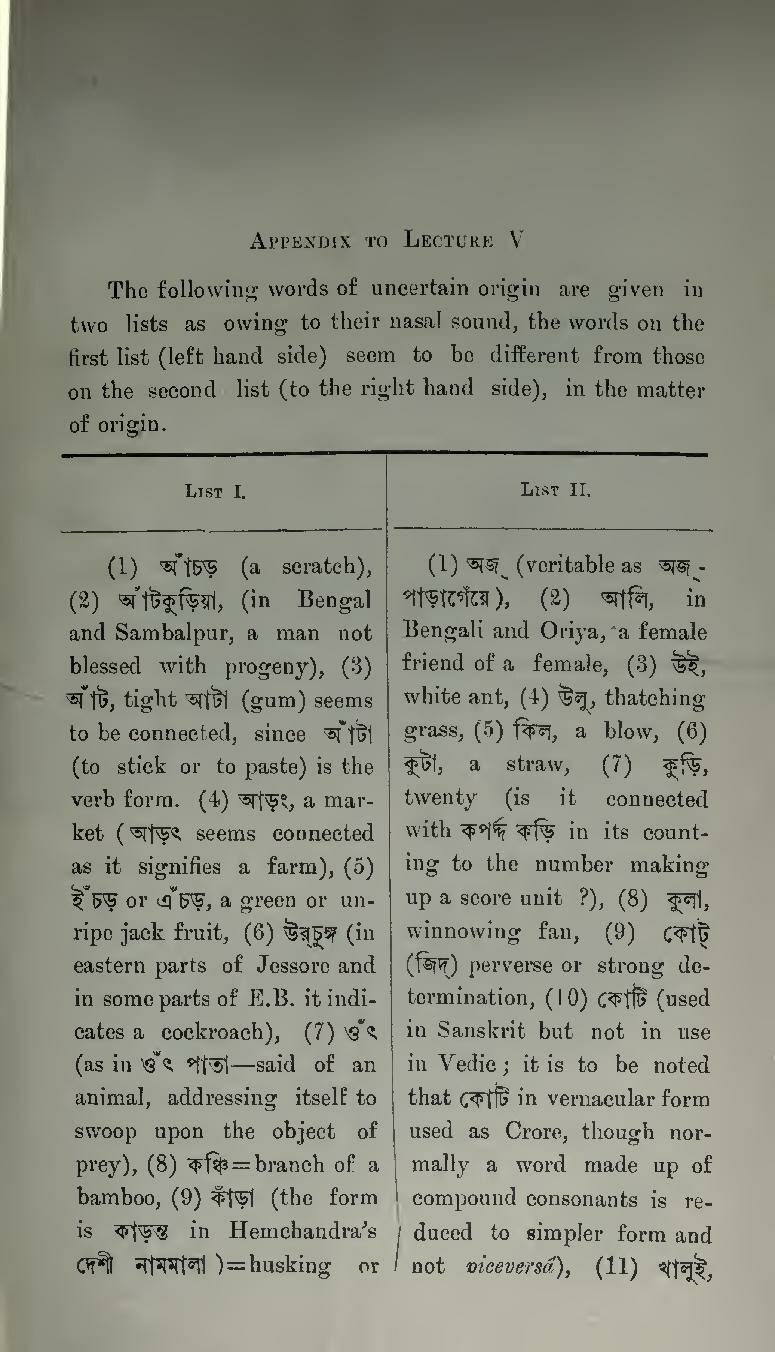Appendix to Lecture V
The following words of uncertain origin are given in two lists as owing to their nasal sound, the words on the first list (left hand side) seem to be different from those on the second list (to the right hand side), in the matter of origin.
| List I. | List II. |
| (1) আঁচড় (a scratch), (2) আঁটকুড়িয়া, (in Bengal and Sambalpur, a man not blessed with progeny), (3) আঁট, tight আটা (gum) seems to be connected, since আঁটা (to stick or to paste) is the verb form. (4) আড়ং, a market (আড়ৎ seems connected as it signifies a farm), (5) ইঁচড় or এঁচড়, a green or unripe jack fruit, (6) উর্চুঙ্গ (in eastern parts of Jessore and in some parts of E.B. it indicates a cockroach), (7) ওঁৎ (as in ওঁৎ পাতা—said of an animal, addressing itself to swoop upon the object of prey), (8) কঞ্চি=branch of a bamboo, (9) কাঁড়া (the form is কাড়ন্ত in Hemchandra's দেশী নামমালা)=husking or | (1) অজ্ (veritable as অজ্-পাড়াগেঁয়ে), (2) আলি, in Bengali and Oriya, a female friend of a female, (3) উই, white ant, (4) উলু, thatching grass, (5) কিল, a blow, (6) কুটা, a straw, (7) কুড়ি, twenty (is it connected with কপর্দ্দ কড়ি in its counting to the number making up a score unit?), (8) কুলা, winnowing fan, (9) কোট্ (জিদ্) perverse or strong determination, (10) কোটি (used in Sanskrit but not in use in Vedic; it is to be noted that কোটি in vernacular form used as Crore, though normally a word made up of compound consonants is reduced to simpler form and not viceversầ), (11) খালুই|- |
